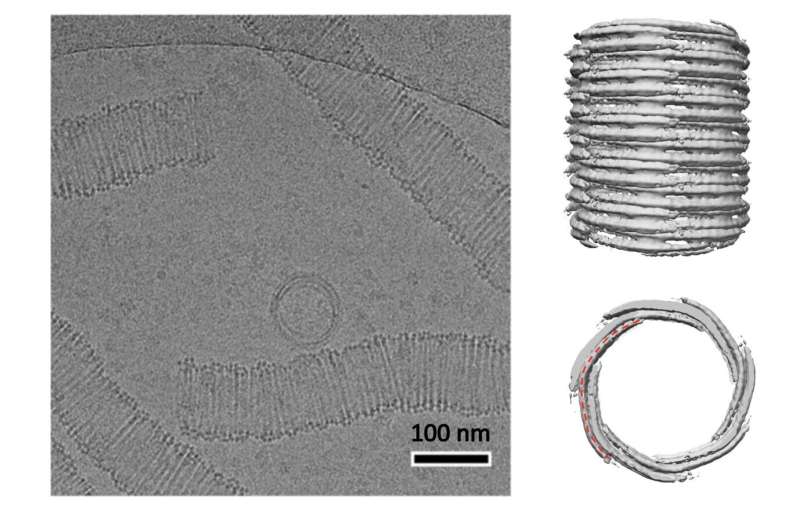Tubulins named after the Norse god Odin may be the missing link between single-celled organisms and human cells

A team of researchers from Nagoya University in Japan may have discovered a missing link between bacterial cells and animal and plant cells, including those of humans. They named it the Odin tubulin.
The origin of tubulin is crucial for understanding the process of eukaryogenesis, the point at which animal and plant cells separate from bacteria. In animal and plant cells, tubulin forms microtubules which are critical to their internal organization. Tubulin supports the cell, giving it structure, shape, and internal organization. Because it is so essential to the cell, uncovering the origin of tubulin would be a remarkable step in understanding how the complex cells found in animals and plants diverged from the single cells of bacteria.
Archaeons of the Asgard archaea superphylum are crucial to this research because scientists consider them the closest single-celled relative to animal and plant cells. Although these microscopic single-celled organisms look like bacteria, they differ in genetic makeup and cell structure. Therefore, as an intermediary between bacteria and animal/plant cells, scientists regularly use them to understand the evolution of the features of animal/plant cells.
In a study published in Science Advances, a group led by Akihiro Narita, Associate Professor of Nagoya University's Division of Biological Science, Graduate School of Science, in collaboration with Tokyo Institute of Technology, Okayama University, and the Earth-Life Science Institute, used X-rays to investigate a tubulin homolog protein from the archaeon Odinarchaeota whose name comes from Odin, a god from Norse mythology.
"Its filament structure was surprising. The diameter was 100 nanometers, which is much wider than the microtubules of eukaryotes," Narita explains. "The architecture was also unique. The molecules polymerize into arcs, which are then assembled into a slinky-like coil. We can view this coil structure as an intermediate in the evolution between FtsZ, a bacteria tubulin homologue that also polymerizes into rings, and the tubulin found in plant and animal cells."
Professor Narita's group has also explained how the tubulin might have evolved. They hypothesize that it emerged before the origin of plant/animal cells. The segregation of chromosomes of increasing size and enlargement of cell size during eukaryogenesis may have required the development of stiffer tubules to navigate the widening cellular distances and/or payloads. This may have produced evolutionary pressure that encouraged a shift from a flexible type to the stiffer parallel protofilament pattern seen in microtubules.
Professor Narita is excited about the implications of their discoveries. He says that "we believe it is highly likely that microtubules are the middle of the evolutionary process. This discovery reveals part of how eukaryotes—including us—came into being."
More information: Caner Akıl et al, Structure and dynamics of Odinarchaeota tubulin and the implications for eukaryotic microtubule evolution, Science Advances (2022). DOI: 10.1126/sciadv.abm2225
Journal information: Science Advances
Provided by Nagoya University




















